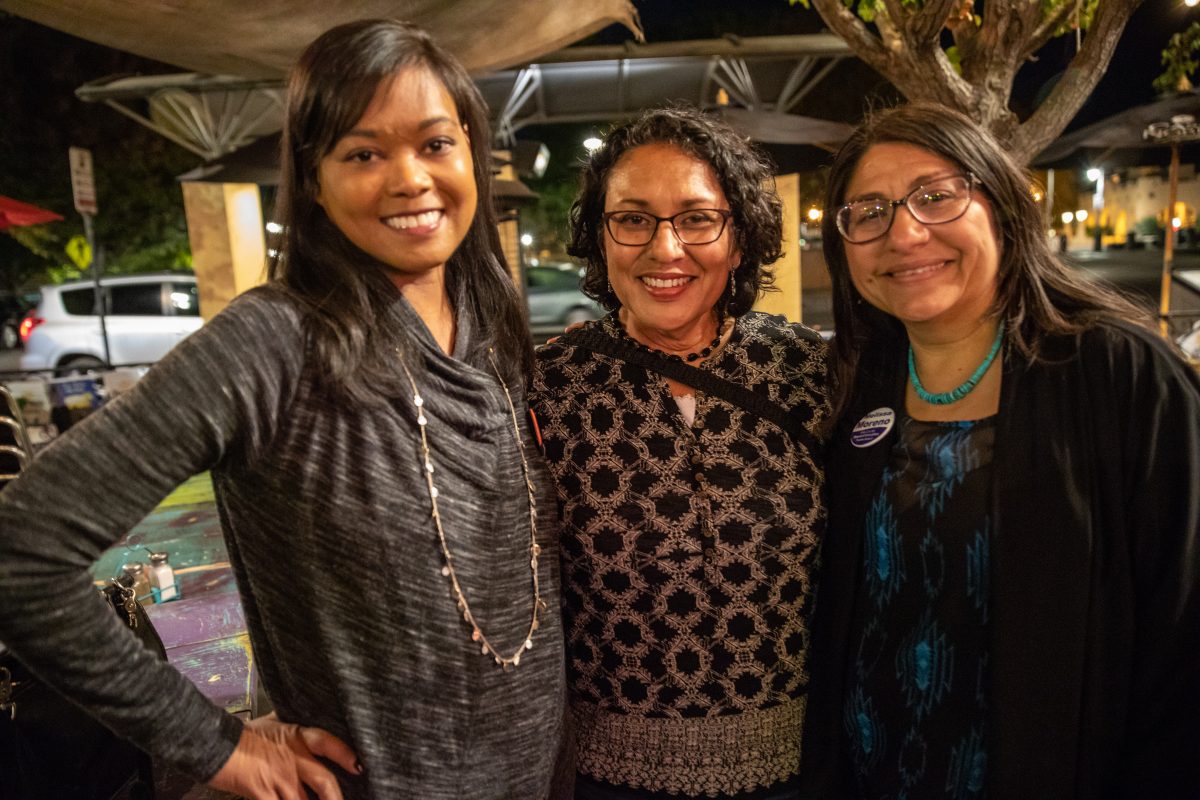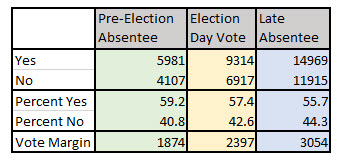
On Friday, 24 days after the election was held, the county finally wrapped up their count in all of the local contests. None of them were particularly close and so, as expected, the results really did not change.
But there were some notable results. In the DJUSD trustee race, it was really no contest as Chris Legal, the fourth candidate received just eight percent of the vote, leaving the top three vote-getters to be overwhelmingly elected.
Of note, the one incumbent Tom Adams finished third of those three. He had finished third back in 2014 as well.
The overwhelming first place finisher was Cindy Pickett, who received nearly 66% of the ballots. 31,616 voted in the race, and 20,847 of them voted for Ms. Pickett. She had nearly a 4000 vote advantage over second place finisher Joe DiNunzio. Tom Adams was about 900 votes behind Mr. DiNunzio.
The school board now sees Madhavi Sunder and Barbara Archer leave and they are replaced by Cindy Pickett and Joe DiNunzio.
The rest of the board is: Alan Fernandez (May 2014), Tom Adams (November 2014), and Bob Poppenga (November 2016). No one on the board has served even five years at this point.
In the race for Yolo County Board of Education, Trustee Area 2, Melissa Moreno expanded her advantage over former DJUSD Superintendent David Murphy. Her advantage was nearly 2 to 1 with a final  result of 66.1 to 33.9 – a nearly 4300 vote advantage.
result of 66.1 to 33.9 – a nearly 4300 vote advantage.
Interestingly enough when the Vanguard did its pre-election analysis, all signs seemed to point toward a Melissa Moreno advantage. She outraised him in terms of contributions from other sources, she had a huge advantage among currently elected officials, and she had a sizable letters to the editor advantage.
We gave her a slight advantage in that race – and frankly I was expecting it to be more of a toss-up given his long standing service as a Superintendent – but as we noted during the election, there is a belief that he was fired from the district in the aftermath of the King Hall episode. That clearly played a role in this race – especially noting some of the people who opposed Mr. Murphy.
In addition, Ms. Moreno simply ran a better and more robust grassroots campaign. In the end, we are still a bit surprised not that she won, but at the margin of that victory which was overwhelming in a race that appeared to be a toss-up (at best) on paper going in.
Measure M, the facilities bond won with nearly a 3 to 1 advantage. 22,193 to 7607. The final market was 74.5 to 25.5. A lot of people believe that a parcel tax would be a tough stretch to get to two-thirds of the vote – well, that may be, but at least this year, the facilities bond won overwhelmingly (it only needed 55 percent) with no real opposition.
In the most watched race of the election was Measure L. It still won handily, but the margin definitely closed – at least in terms of percentages. It went from 57.4 to 42.6 to 44.3, a still robust win, but an 11.4 percentage point vote margin rather than the nearly 15 point margin on Election Day.
It is hard to know what to make of it. But we do have three snap shots of results.

The first thing to note is that the percent yes dropped throughout. So the margin closed from 18.4 points to 11.4 from the pre-election absentee until the final vote. The early advantage held, but the percentages changed.
However, something else to note here – while the percentages changed, the no side never closed the gap. In fact, the vote gap itself widened. The initial 1874 margin expanded to 2397 at the end of Election Day, and while the percentages closed, the margin of victory actually expanded to 3054. That means that while the margin was a good deal close in the third pool, the number of yes votes still exceeded the number of no votes even among the late absentee group.
Bottom line: the measure still passed fairly handily. Just about 15,000 Davis Citizens approved of the project.
Finally, the turnout numbers are interesting.
In the Measure L election, the county notes that 29,000 of 39,751 registered voters turned out to vote. That is a 73 percent turnout.
Of those, 26,884 voted in the Measure L race. That’s about 92 percent of those who came out to vote, actually voted in the November General Election.
 It is harder to make sense of the correlation between turnout and results. On the surface, it seemed like the placement of Measure J/ R measures in special elections was fatal to the project. The first two elections were special – in November 2005 and November 2009 – and went down handily.
It is harder to make sense of the correlation between turnout and results. On the surface, it seemed like the placement of Measure J/ R measures in special elections was fatal to the project. The first two elections were special – in November 2005 and November 2009 – and went down handily.
Running Nishi during the Spring Primary the last two years and Measure L in November 2018 during a General, seemed to result in two wins and a very competitive loss in June 2016.
The thinking is, a special election brings out a smaller electorate who are more engaged and likely more likely to vote no.
However, looking at the turnout paints a somewhat different picture. It is true that a very small percentage voted in November 2009 – less than one third of those registered, it is also true that sixty percent voted in November 2005 (and that was among the last years with the school board on the odd election year cycle) when Measure X went down handily.
Moreover, the voters turnout was fairly low in June, barely half the voters came out and yet, they heavily supported Nishi.
This is one of the calculations that MRIC might consider when deciding whether to put a project on the ballot in 2019.
—David M. Greenwald reporting







D. Greenwald: “King Hall”
Probably should be “King H.S.”
Political advice for developers, courtesy of the Vanguard.
At the Davis Vanguard, it’s always campaign season for development projects.